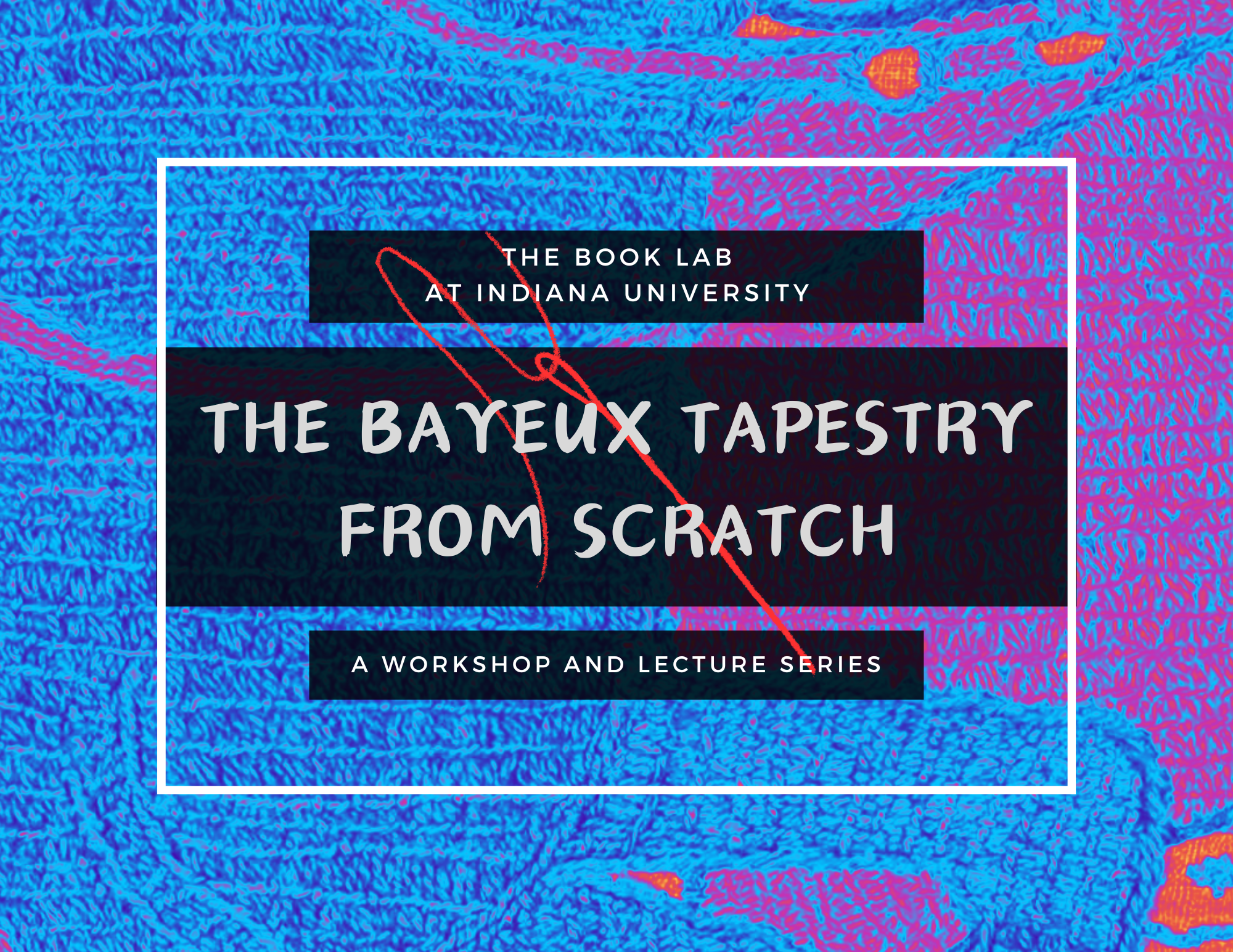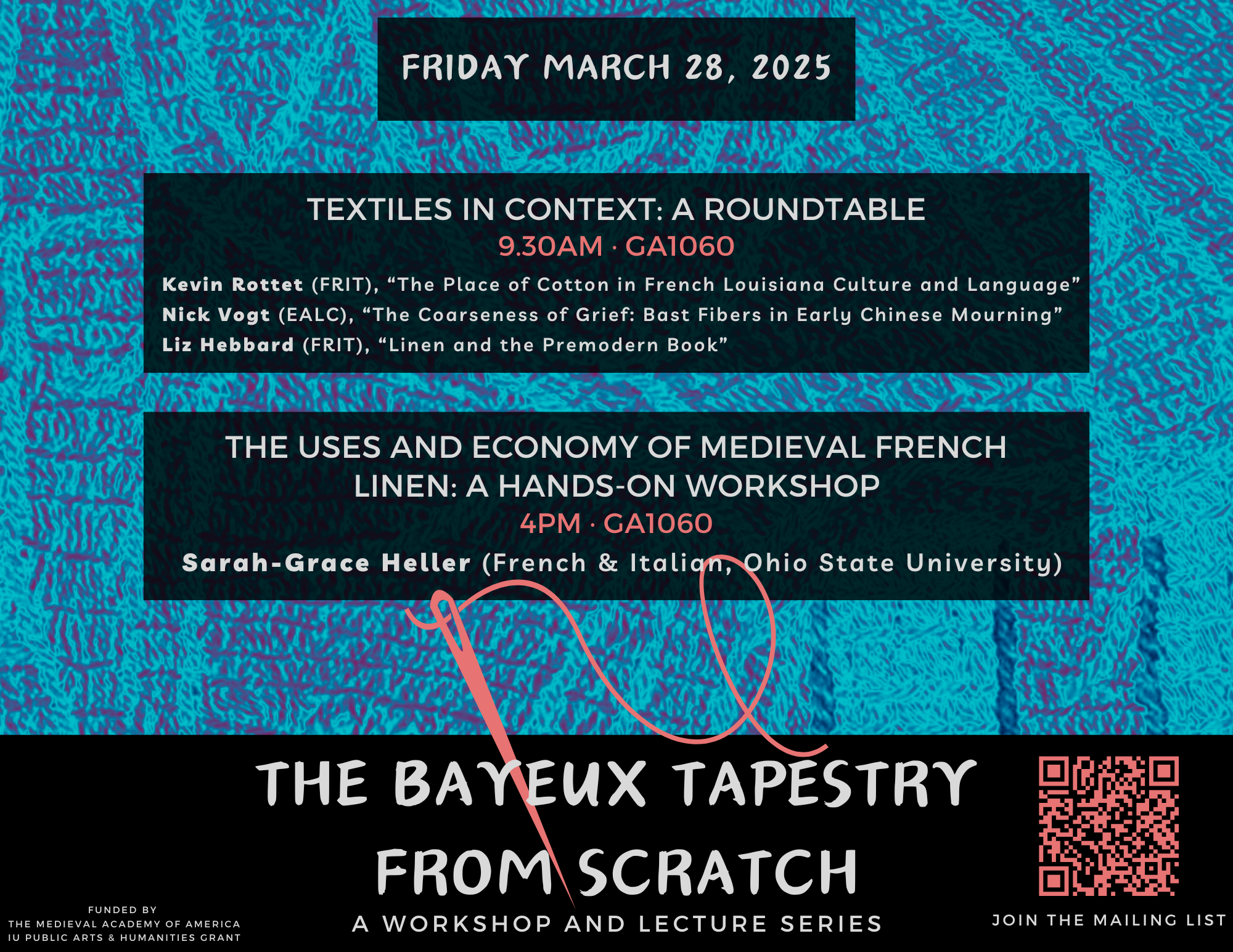PI: Liz Hebbard
The Bayeux Tapestry from Scratch Project (BTFS) mobilizes experimental and experiential methods in humanities outreach and research. The Bayeux Tapestry is a 70-meter-long embroidery depicting the Battle of Hastings in 1066, produced for display in the Bayeux cathedral in the late 11th century. Though the object itself is worthy of study for the embroidery techniques used, for its account of important historical and political events, and for the anonymous women artists who made it, this project offers a perspective on the time cycles of production from well before the time needle meets cloth.
The Bayeux Tapestry from Scratch is a three-year workshop and lecture series organized into three themes: Flax to Linen, Sheep to Yarn, and Premodern Needlecraft. Beginning with the planting of flax in the Book Lab’s academic garden at Hilltop, the project aims to build understanding around premodern agricultural, visual storytelling, and craft practices through the knowledge- and labor-intensive steps behind the creation of this famous textile: hackling, breaking, scutching, spinning and weaving flax; combing, spinning, and dyeing raw wool; and finally premodern needlework. The project will feature hands-on workshops paired with lectures from various academic specialists (in, for example, archeobotany, textile history, or photo-degradation of cultural heritage) and events with local community artisans.
This project has been generously supported by an Indiana University Public Arts & Humanities Project Grant and a Medieval Academy of America Centennial Project Grant.
If you'd like to hear about upcoming events in this series, you can join the mailing list here:





